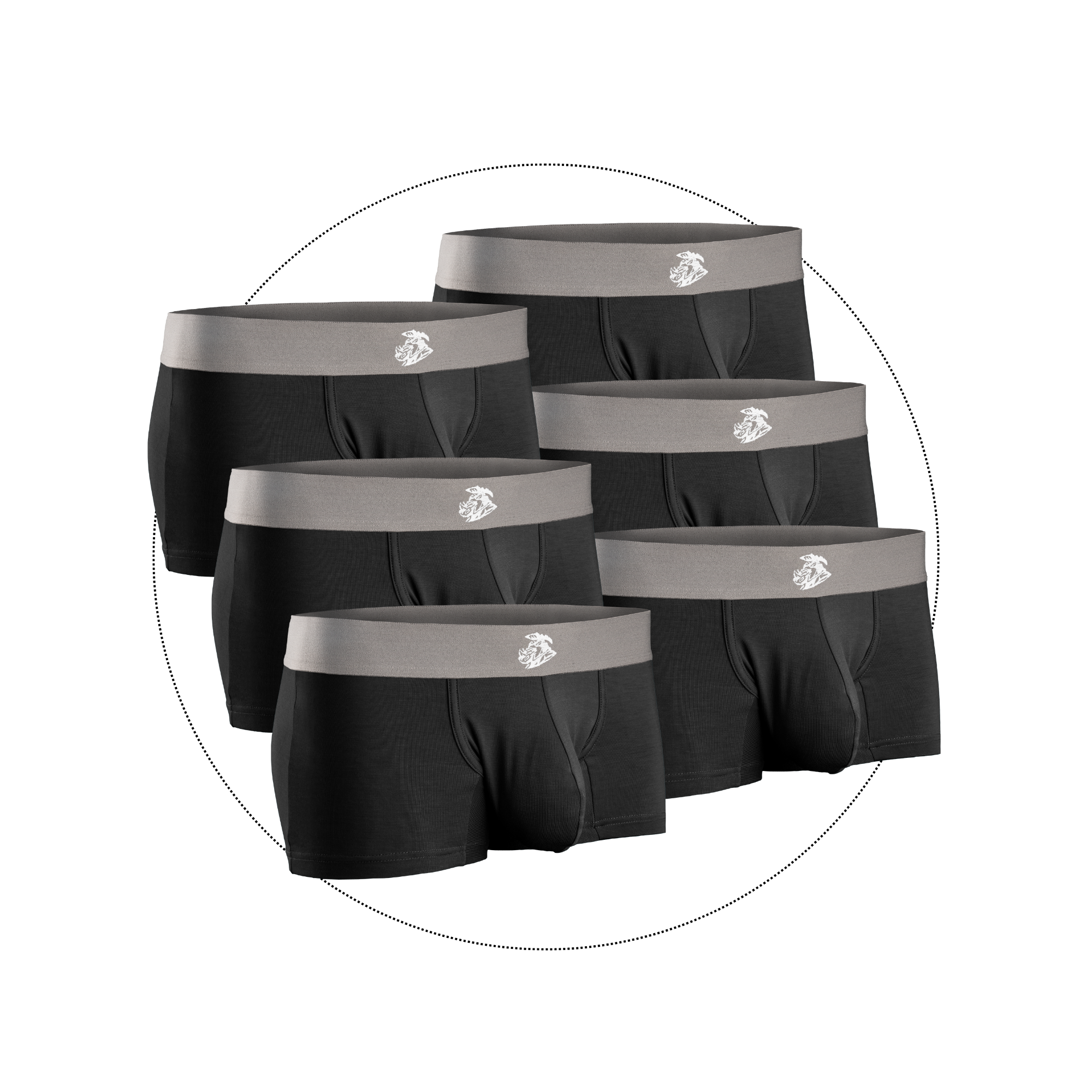Written By: Jared Mortense
When you're hanging off a challenging boulder problem, the last thing you want to worry about is uncomfortable underwear. Whether you're tackling outdoor crags or training at an indoor gym, having the right underwear can make a significant difference in your climbing performance and overall comfort. Let's dive into what makes certain underwear options superior for bouldering and which features to look for when making your choice.
Why Does Underwear Matter for Bouldering?
Bouldering requires a unique combination of flexibility, mobility, and comfort. Unlike traditional rock climbing with harnesses, bouldering demands unrestricted movement as you twist, stretch, and contort your body to solve challenging problems. Your underwear serves as the foundation of your climbing attire, directly impacting how you move and feel during your session.
The Best Men's Underwear for Bouldering provides several key benefits:
- Prevents chafing during dynamic movements
- Offers proper support during high steps and wide spreads
- Wicks moisture during intense sessions
- Maintains comfort through hours of climbing
- Remains discreet under tight climbing pants or shorts
What Do Climbers Look for in Underwear?
Is Cotton Comfortable for Climbing?
While cotton feels soft initially, it's one of the worst materials for active pursuits like bouldering. Cotton absorbs moisture rather than wicking it away, leading to uncomfortable wetness, potential chafing, and even temperature regulation issues during longer sessions. Most experienced climbers avoid cotton underwear entirely.
Are Boxer Briefs Better Than Boxers for Bouldering?
Loose boxers tend to bunch up during the high steps and wide leg spreads common in bouldering. This bunching can cause distractions and discomfort that interrupt your focus on difficult problems. Boxer briefs provide a happy medium—offering support while allowing sufficient mobility for complex movements.
How Important is Moisture-Wicking for Climbing Underwear?
Extremely important. Bouldering often involves intense bursts of energy that generate heat and sweat. Quality moisture-wicking fabrics pull sweat away from your skin to the outer layer of the fabric where it can evaporate, keeping you dry and comfortable throughout your session.
Key Features to Look for in Bouldering Underwear
What Materials Work Best for Climbing?
The ideal bouldering underwear typically features synthetic blends with moisture-wicking properties:
- Nylon/spandex blends offer excellent stretch and recovery
- Polyester microfiber provides softness with moisture management
- Merino wool delivers natural odor resistance for multi-day climbing trips
- Four-way stretch fabrics accommodate extreme movements
Modern performance fabrics have revolutionized athletic underwear, creating options that outperform traditional materials in nearly every metric relevant to climbers.
Should Bouldering Underwear Have a Specific Fit?
Yes—look for underwear with:
- A supportive pouch design that prevents shifting during dynamic movements
- Flat, minimal seams that won't press uncomfortably under harnesses or crash pads
- Longer leg design to prevent riding up during high steps
- Tagless construction to eliminate irritation
Do Antimicrobial Properties Matter?
For those engaging in extended climbing sessions or multi-day trips, antimicrobial treatments help control odor by preventing bacteria growth in moisture-rich environments. This feature isn't just about smelling fresh—it can extend the wearability of your underwear between washes during climbing trips.
How to Choose the Right Underwear for Different Climbing Conditions
Indoor Gym Climbing Considerations
Indoor climbing environments tend to be climate-controlled but can still get warm with physical exertion. For gym climbing, prioritize:
- Breathability to manage the consistent indoor temperature
- Durability for frequent washing after gym sessions
- Lower profile designs that work well under climbing shorts
Outdoor Bouldering Requirements
When climbing outdoors, your underwear needs to handle variable conditions:
- Faster drying capabilities for unexpected weather changes
- Thermal regulation properties for temperature fluctuations
- Enhanced durability against rough surfaces when sitting on rocks between attempts
Maintenance Tips for Climbing Underwear
Quality bouldering underwear represents an investment in your climbing comfort, so proper care ensures longevity:
- Avoid fabric softeners which can compromise moisture-wicking properties
- Wash in cold water to preserve elasticity
- Air dry when possible to extend fabric life
- Consider travel-specific detergents for cleaning during extended climbing trips
Why One Brand Stands Above the Rest
After considering the essential features that make up the Best Men's Underwear for Bouldering, one brand consistently delivers on all fronts. Real Men Apparel Company has designed underwear specifically with climbers in mind. Their performance boxer briefs incorporate four-way stretch fabrics, anatomical support, and moisture-wicking technology that keeps climbers comfortable from the first problem to the last.
What sets Real Men Apparel Company apart is their attention to climber-specific details—flat seams positioned away from pressure points, longer legs that stay in place during high steps, and fabrics tested in real climbing conditions. Their dedication to creating underwear that enhances rather than hinders performance makes them the go-to choice for serious boulderers.
Summary
Finding the Best Men's Underwear for Bouldering involves considering several key factors: appropriate materials with moisture-wicking properties, athletic fit with freedom of movement, and design features that accommodate the unique demands of climbing. The right underwear eliminates distractions and discomfort, allowing you to focus entirely on solving challenging boulder problems.
Whether climbing indoors or outdoors, investing in quality performance underwear specifically designed for active pursuits pays dividends in comfort and performance. Real Men Apparel Company offers solutions that address all the crucial elements discussed, proving that sometimes the most important piece of climbing gear is the one you think about the least—until it's not performing well.


